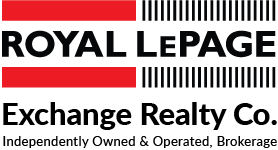New homeowners often find there’s more to keeping up a house than cutting the grass and clearing snow from the driveway.
Tools
To start with, a new homeowner needs to have on hand a ‘basic tool kit’. A number of basic tools are a must C a metal hammer, screwdrivers with a variety of heads, a small saw, electric drill, adjustable wrench, pliers and measuring stick. Sandpaper and an assortment of screws and nails are also very handy. These tools will help with simple repairs such as securing loose tiles, adjusting a door, installing a lock, etc.
Meters
Once you’re equipped to perform the most basic repairs, take a look around. Do you know where your gas/electricity and water meter are located? Usually these are found outside the home by a side or back wall. This makes it easy for the meter reader who can take the readings without bothering you. Sometimes these meters, especially the water meters in older homes, are located indoors — usually in the basement.
As new homeowners, it’s a good idea to check your meters on a weekly or monthly basis. This will help you gain an understanding of seasonal increases and decreases in consumption and enable you to take measures to become more energy/water efficient.
Plumbing
Another area where a little knowledge can go a long way is in the plumbing system. House plumbing is divided into two separate parts. One is the fresh-water system that provides cold and hot water from the various fixtures throughout the house; the other is the drainage system that carries waste out of the house.
The fresh-water system can be completely shut down by closing the main valve, which is usually located in the basement near where the underground water line enters the house. Most lines that branch out from the main line also have individual shut-off valves so water can be turned off to one area without disturbing the flow in another. Most plumbing jobs require at least the partial shut-off of your home’s water supply.
Meanwhile, the drainage system connects all the plumbing fixtures to a main sewer line that carries waste out of the house to a sewer or septic tank. The main sewer line extends above the roof of the house to allow gases to escape. The opening of this pipe, above the roof, is called a vent and must never be covered or allowed to become clogged with debris.
Electrical
Knowledge of your home’s electrical system is also valuable in case you have to turn off all power in case of an emergency, such as a fire. You should know the location of the main electric switch in the house and how to use it. You should also know the location of the fuse box or circuit breaker and how to reset a breaker or replace a fuse in case one blows.
The main switch, along with the circuit breaker panel or fuse box, are located near the electric meter at a point close to where the power lines come into the house. They may be in the basement, utility room, or even the kitchen. The older the home, the more likely it will have a fuse box instead of a circuit breaker panel. Always replace fuses with ones of the same capacity.
Heating
Another important aspect of your new home is its heating system. The more familiar you are with it, the less likely you might find yourself cold on a winter’s day. Heating systems are usually fueled by oil, gas, electricity or wood.
Gas-fired and oil-fired heating systems have burners and should be inspected regularly, usually once a year before the start of the heating season. Gas burners have pilot lights. You should learn to re-light the pilot light on your gas burner in case it ever goes out. You should also know the location of the gas shut-off valve so you can turn off the gas in case the burner doesn’t light or you smell gas escaping.
Heating systems operate in a variety of ways. The better you understand your system, the safer and more efficient you can make it.
Hazards
Fire in a home is a major hazard that all new homeowners should be aware of. Early detection is the key to protecting your family and keeping damage to a minimum. Ensure your home has smoke detectors installed in hallways and bedroom areas. Smoke detectors sound an alarm when smoke is in nearby air, even if there is no intense heat. Ideally, you should have a smoke alarm in each bedroom.
If you have a gas-fired heating system or a fireplace in your home, it’s also a good idea to install carbon monoxide detectors in the bedroom areas. Carbon monoxide is a colorless, odorless, tasteless toxic gas that, at high levels, can cause flu-like symptoms and even death.
While carbon monoxide detectors are not a substitute for proper care and maintenance of your home, they provide a good second line of defense by sounding an alarm when carbon monoxide reaches an unsafe level.
When we purchase a home, most of us want to turn it into a safe and secure haven for our families. The more we know about the home we have purchased, the more efficient and effective we can be.




